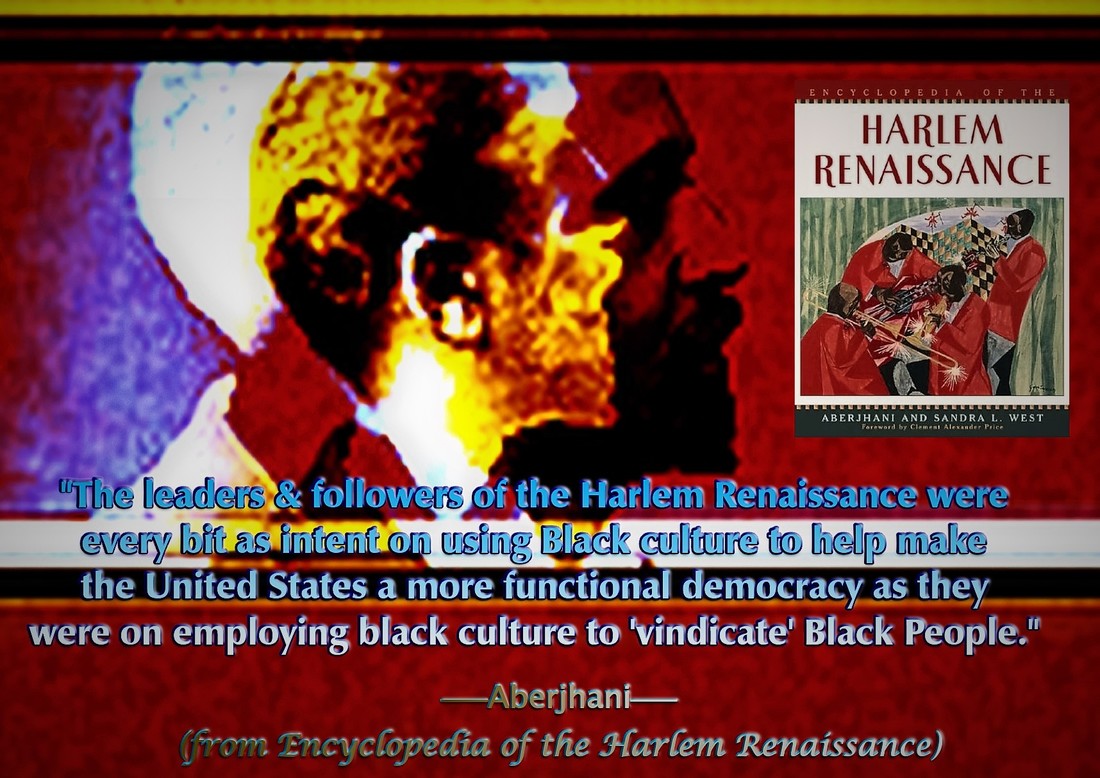 Quote from Encyclopedia of the Harlem Renaissance (Facts On File/Infobase Publishing): “The leaders and followers of the Harlem Renaissance were every bit as intent on using Black culture to help make the United States a more functional democracy as they were on employing Black culture to 'vindicate' Black people.” Aside from providing a platform on which to battle for the equality of African Americans, the Harlem Renaissance may also be viewed as an important experiment in diversity and multiculturalism. Whereas the principle authors of the movement were African Americans, most of them rose to national fame with the assistance of white publishers and some with the help of white patrons such as Charlotte Osgood Mason. The encyclopedia acknowledged this fact with profiles of a number of such figures, including entries on Mason, magazine publisher Max Eastman, and Carl Van Vechten. Recognition of individual sexual identity and emerging gay culture played an important role in the diverse nature of the Harlem Renaissance as well. In the article titled “Sexuality and the Harlem Renaissance,” this author observes the following: “The writers, artists, and musicians of the Harlem renaissance in their work and in their lives generally approached sexuality as an aspect of democratic freedom open to exploration and definition on one’s own terms.” (Aberjhani, Encyclopedia of HR, p. 302) Such as an observation matches very well the stated concerns and objectives of the gay marriage equality movement that has gained unprecedented momentum over the past few years. Along the same lines, ongoing debates (if they may be called such) over women’s rights to determine aspects of their physical well-being were noted in the same article: “…With American slavery less than 100 years in the past, one important message discerned from the writings of [Zora Neale] Hurston and other black women writers of the era was that their bodies now belonged to themselves rather than anyone else, white or black.” (Encyclopedia of HR, p. 302) That America still struggled with the implications of the above statement, even while the passage of controversial birth control laws demonstrated the truth of it, provided yet another reason why studies of the Harlem Renaissance continue to inform students’ understanding of issues impacting lives today. Widespread Impact The importance of Encyclopedia of the Harlem Renaissance since its initial publication has been documented in many different ways. Significant honors such as the Choice Academic Title Award, the New Jersey Notable Book of the Year Award, news magazine cover stories about it, and inclusion in ESSENCE Magazine’s Holiday Gift Guide have placed it among standard works in the field. It occupies shelves in more than a thousand libraries around the world, including the New York City’s Schomburg Center for Research in Black Culture, The American University in Cairo, Egypt, Harvard Library at Harvard University, Cambridge, MA, and The National Library of Australia in Canberra. It has also been added to the Bloom’s Literary Reference Online and the Facts On File African-American History Online education databases. The two co-authors and the author of the foreword identified on the cover of Encyclopedia of the Harlem Renaissance (which features classic art by Jacob Lawrence) were not the only ones to contribute to the title’s completion. Among those writers who contributed an article to the book, most have gone on to pen memorable works of their own or to distinguish themselves in other ways. They include the following:
The encyclopedia made its debut during celebrations of the centennial for the publication of W.E.B. Du Bois’s classic The Souls of Black Folks and in the same year as The Wisdom of W.E.B. Du Bois (Kensington Books, Philosophical Library Series). Aside from serving as an unprecedented documentation of a singular period in American and African-American history, the celebrated book represents a key touchstone document for the 100th Anniversary of the Harlem Renaissance Initiative. Aberjhani About AberjhaniHaving recently completed a book of creative nonfiction on his hometown of Savannah, Georgia (USA) Author-Poet Aberjhani s currently writing a full-length play about the implications of generational legacies as symbolized by efforts to rename the Eugene Talmadge Memorial Bridge.
0 Comments
Your comment will be posted after it is approved.
Leave a Reply. |
AberjhaniWinner of Choice Academic Title Award, Best History Book Award, and Notable Book of the Year Award for Encyclopedia of the Harlem Remaisssance. Archives
July 2023
Categories
All
|
 RSS Feed
RSS Feed